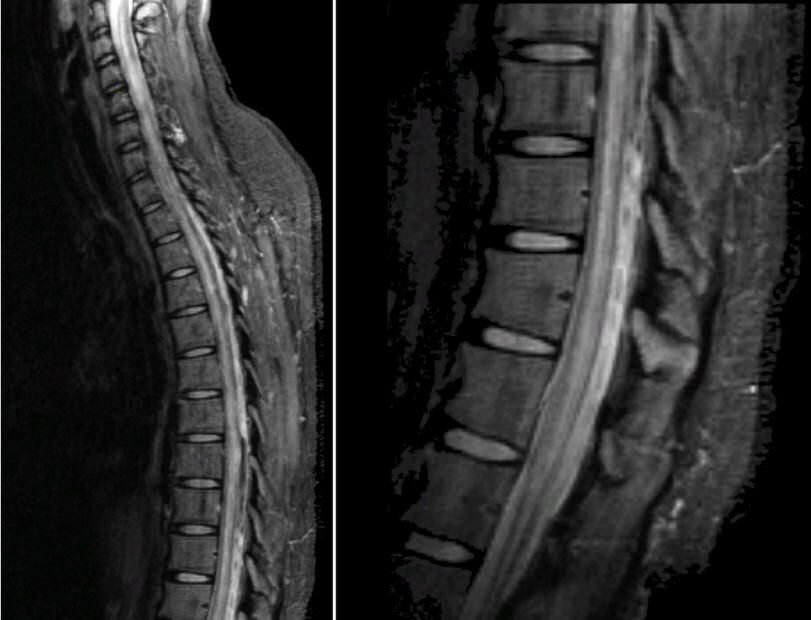
A 22 year-old woman presented with the acute onset of rapidly progressive quadriplegia and confusion.

![]()
T2-weighted MRI sagittal images of the spine. (Left) Cervical and upper thoracic spine; (Right) Close up view of the lower thoracic spine. Note that nearly the entire spinal cord has intramedullar lesions. In this patient, nearly all of the clinical deficits were the result of her spinal cord involvement. Acute disseminated encephalomyelitis (ADEM) is a monophasic demyelinating syndrome that occurs in association with an immunization or viral infection. It is characterized clinically by rapid development of focal or multifocal neurological dysfunction. Clinical features include encephalopathy ranging from lethargy to coma, seizures, and focal and multifocal signs reflecting cerebral (hemiparesis), brainstem (cranial nerve palsies), and spinal cord (paraparesis) involvement. In some cases, it may not be possible to distinguish ADEM from the first episode of multiple sclerosis (MS). The mortality varies between 10% and 30%, with complete recovery in 50%.
Revised
04/23/06.
The Electronic Curriculum is copyrighted 1998, Case Western Reserve University
School of Medicine.